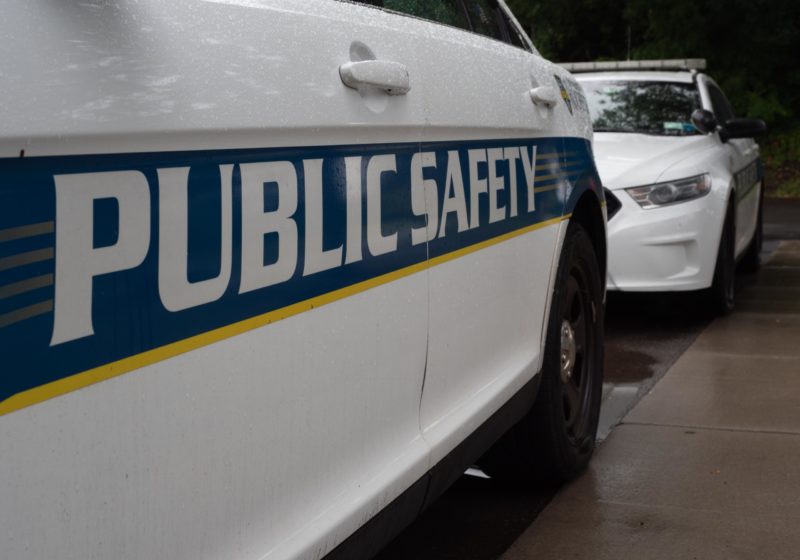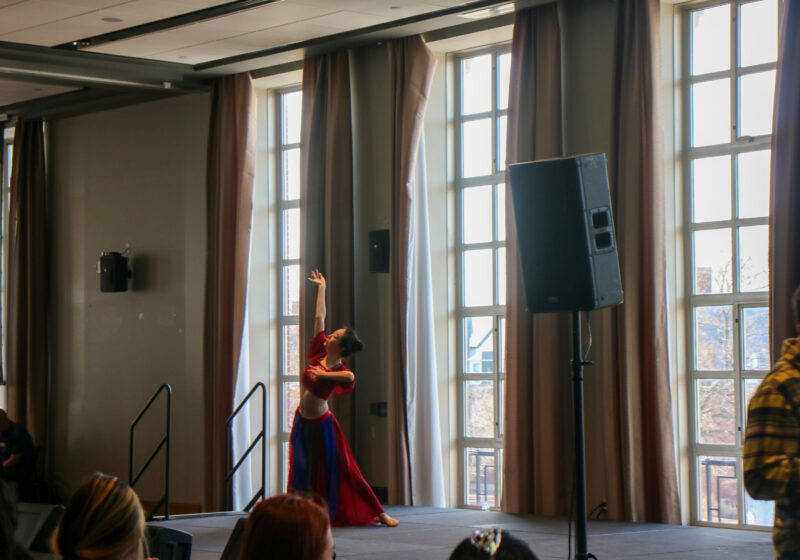Almost 200 UR students, faculty, and community members gathered virtually via Zoom on Tuesday, Sept. 8 to discuss the Department of Public Safety (DPS) and whether its role in our University is truly necessary.
The student-led event, titled “Who Are We Keeping Safe? Re-imagining Public Safety On Campus,” was hosted by UR Abolition Coalition (URAC), a police abolition student-led group that started over the summer, and two SA Senators: senior Amanda Liang and sophomore Devon Rogers. URAC, did not collaborate with SA as a whole to organize the event.
“It doesn’t really make sense to have an abolition coalition be SA-recognized and to go through the same bureaucratic channels that other groups have to,” senior Antoinette Nguyen, another member of URAC, said.
“We don’t want to be affiliated with the University […] because that’s what we’re trying to dismantle here,” URAC member Veanessya Vasquez-Lopez explained. “Not the University per se, but the structures and the rules, the things that the University does that we don’t agree with.”
However, URAC still collaborates with individual senators like Liang and Rogers. Liang was able to reach out after connection with Kristin Doughty, the organizer behind the UR Scholar Strike and Teach-In, and plan the “Re-imagining Public Safety” discussion.
The discussion was guided by prepared questions, but allowed for participant questions throughout the call.
A key topic of discussion was the disarming of DPS. In 2018, DPS brought forth a proposal to expand their armed peace officer program, previously confined to the Medical Center, to include armed and stationed officers on the River Campus, 19th Ward, and Eastman School of Music, as well as to allow armed supervisors free access to all campuses — a move which many students objected to at the time. In April 2019, then-UR President Richard Feldman approved limited response by armed DPS supervisors to any campus for reasons such as participating in a life-saving action or an emergency response.
These supervisors have oversight for officers at all University campuses, including the armed peace officers at the Medical Center, though routine patrols or working a post on campus is unauthorized. Director of DPS Mark Fischer wrote to the Campus Times in an email that there are currently no plans or proposals to arm additional officers or disarm the already armed ones. But students have concerns.
In the wake of Daniel Prude’s murder by Rochester police in March 2020 and the ensuing citywide protests, students, faculty, staff, and members of the wider Rochester community agree that conversations regarding police brutality are urgent, but have different perspectives on how to react to them.
“As the country is reevaluating policing in general, I think it’s a good time to check in with our community and ask: What are we actually getting from public safety?” junior and URAC member Indy Maring said during the discussion.
Students and faculty have shifted these questions onto DPS. “[DPS] acts like a police force instead of a community safety support,” said associate professor of Warner School of Education Nancy Ares.
Associate professor of Music Jennifer Kyker, an attendee at the event, said that in parts of the 19th Ward closest to the River Campus, DPS is the designated first responder to emergency calls. According to the DPS website, DPS also frequently interacts with individuals not affiliated with UR on city streets and sidewalks, and thus “[RPD] has an expectation that an armed DPS officer will be available to respond to these incidents.”
Fischer wrote in an email to CT that “[o]ur peace officer authority is limited to property or controlled by the University, and the immediately adjacent sidewalks and roadways. If a person, affiliated or not, commits a crime in those areas, a peace officer can make an arrest if no other means exists to handle the situation.”
While not all Public Safety staff are sworn peace officers, they all share the same duties, except that peace officers are able to arrest for a criminal offense, according to Fischer and the DPS website. Additionally, while DPS receives more training that is UR specific, DPS sworn peace officers and RPD officers both receive the same basic courses mandated by the NY State Division of Criminal Justice Services from the regional Police Academy, where all local law enforcement agencies train.
According to Fischer, DPS is completely independent from RPD. Fischer added that “DPS is not involved with any protest related enforcement activities in the City of Rochester, nor is there any pressure to do so.”
While many students feel there are alternate forms of safety that won’t leave students feeling violated, not everyone in the community feels the same way.
“I am not negating the negative things that have happened,” Warner School of Education graduate student Reine Chabarika, a person of color, said during the discussion. “[But] there is a need for security and a need for respect.”
Many students said that because of white privilege, certain individuals felt safer in the presence of Public Safety, whereas mainly people of color were more fearful. Additionally, they expressed that because UR has many international community members, not everyone is aware of the historical relevance of racial injustices occurring in the local community.
Another aspect of the discussion focused on the Public Safety Review Board (PSRB), a group of administrators that makes recommendations to the University President in relation to DPS policies, officer selection, training, equipment selection, and management.
“[One] thing to note is that [the PSRB] individuals are not necessarily experts or representatives of the student body, or representative of community members as a whole,” Liang said. Many students in the discussion raised similar concerns about the disconnect between upper-level administration and the student body, and felt that administrators do not understand students’ discomfort with DPS on campus.
Senior Vice President for Administration and Finance and PSRB permanent administrator Holly Crawford told CT in an email that there are no current plans to defund public safety.
“Our officers are the quickest responders to calls for assistance and are most familiar with the layout of our campuses […] and the needs of our community,” she wrote.
DPS publicly released their policies on their website a few weeks ago after encouragement from SA, and students are hoping that DPS will make their budgets and other statistics public as well. Even as a senator, Liang said that navigating complications with the bureaucracies to make change was difficult.
Looking for ways to generate action and hold administration accountable was another topic that circulated during the conversation.
“I think applying pressure where it hurts the most is also something that is powerful because it can be easy for administration to ignore students when we’re just talking,” URAC member Nahisha Jackson said.
“Students have the most power […] Faculty [can] be replaced, but students have their wallets,” junior Steven Colberg said. “We’re paying them, and that’s what gets them to listen.”
In an email to CT, Chief Diversity Officer and Vice President of Equity and Inclusion Mercedes Ramírez Fernández said that there are many opportunities available for having conversations around Public Safety. “Re-imagining [means] redesigning the governments of the [PSRB] to be more than just a review board,” Fernández said. “I hope there is a little bit more trust […] that we can do the work together. It needs to be done in partnership and community.”
Fernández also said that she and UR President Sarah Mangelsdorf have been working over the summer to help departments create diversity, equity, and inclusion plans.
The two have come up with five institutional goals, which they presented to the UR faculty senate in June. They hope to develop and sustain infrastructure to support equity, diversity, and inclusion; enhance recruitment and retention of faculty, staff, and students; cultivate a fair and just climate, culture, and community; advance UR’s mission through an equity, diversity, and inclusion lens; and engage the community for racial injustice.
Many students largely agreed that the funds currently supporting DPS should be reallocated to other departments in need of more resources, such as the Paul J. Burgett Intercultural Center and University Counseling Center.
Fernández said that she has been working with the PSRB to create a proposal that will re-imagine the needed representation on the committee, as well as following up with deans and the URMC for their action plans across institutional priorities. According to Fernández, another small committee was made to analyze how to expand minority and women-owned businesses that do work with the University, specifically catering. In the meantime, the Office of Equity and Inclusion is partnering with the Office of Advancement and Alumni Relations for a lecture series in collaboration with UR alumni, scholars, and various academic and administrative units.
In response to calls for more funding for mental health services, and hiring more faculty of color, Crawford explained that this summer, President Mangelsdorf launched a year-long fundraising campaign called Together for Rochester. The campaign aims to raise $100 million to “support diverse faculty recruiting efforts,” and focuses on diversity efforts such as scholarships, financial aid, and career support. Additionally, she said that Fernández has a specific budget for the Equity and Inclusion office.
Despite these administrative efforts, Liang claimed that while it’s the administration’s job to figure out how to be inclusive, they aren’t guaranteed to get it right. In a predominantly white institution, the Black and brown community is asking for more than support.
“We’re in a pandemic — the world is burning outside. We have to start turning up for the liberation of our fellow students and fellow people,” Liang said. “I think people tend to hide behind a facade of political neutrality […] and I don’t think that’s acceptable anymore.” At the time of publication of this article, President Sarah Mangelsdorf did not respond for comment.
Fernández said that discussions like these are helping, but warned that change won’t happen overnight. “The levels of impatience and intolerance for time and action is not [productive]. Change needs to be thoughtful and reflective so that it can be transformative and can be sustained.”
Overall, UR Abolition Coalition said that UR is moving in the right direction.
After the event, students felt more certain of what professors, students, and faculty thought about re-imagining DPS. Liang said that the fact that so many nearly 200 students and faculty showed up speaks to “the strength of the movement and the strength of what we believe to be the truth,” though much work is still yet to be done for UR’s Black community.
A bill written by Rogers and other SA Senators to create the Undergraduate Equity & Inclusion Climate Task Force is still yet to be accepted by SA, Liang said The task force will be able to help students be in conversation with administrators about DPS accountability and systemic policies that would otherwise take place behind closed doors. In the future, URAC hopes that the UR Administration will see similar student committees as a way to amplify more Black and brown voices.
“We don’t need DPS on campus,” Jackson said. “We can keep each other safe.”
Haven Worley is a member of the class of 2024.
Publisher An Nguyen contributed to the reporting for this article.
Editor’s note (9/16/20): A previous version of this article said that the bill written by Rogers and other SA Senators creates the Diversity Affairs Task Force and is awaiting approval from faculty senate. Actually, the bill is to create the Undergraduate Equity & Inclusion Climate Task Force, and is pending acceptance from SA. Additionally, a previous version included a statement from an attendee who claimed that DPS is the designated first responder to emergency calls from the 19th ward. This is inaccurate, and has been taken out. We have included a statement from Fischer clarifying DPS’s boundaries. A previous version also stated that in 2016, a proposal moved to arm 42 officers. This was an error, and has been changed to discuss the 2018 proposal. Finally, a previous version stated that peace officers get 50 additional training hours above what is required by UR – we have taken this out.






